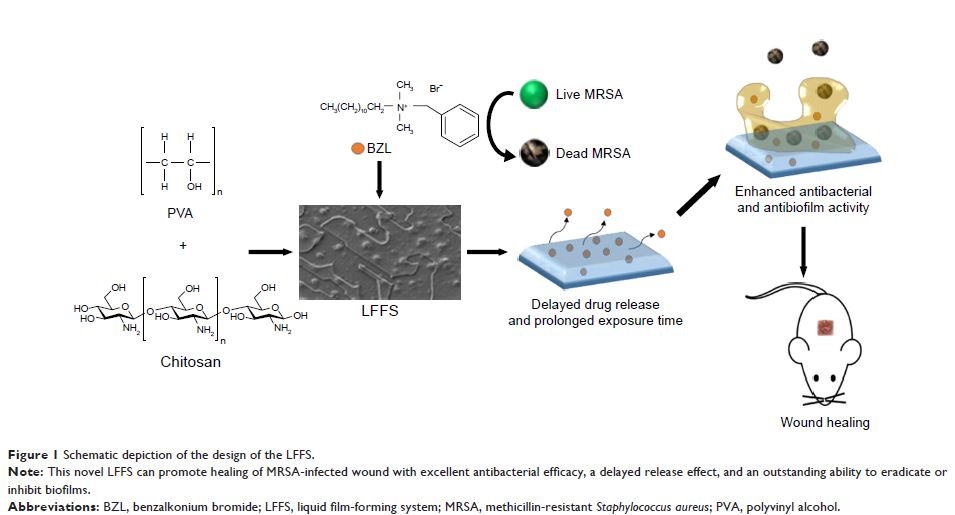9 0 6 7 6
论文已发表
注册即可获取德孚的最新动态
IF 收录期刊
- 2.6 Breast Cancer (Dove Med Press)
- 3.9 Clin Epidemiol
- 3.3 Cancer Manag Res
- 3.9 Infect Drug Resist
- 3.6 Clin Interv Aging
- 4.8 Drug Des Dev Ther
- 2.8 Int J Chronic Obstr
- 8.0 Int J Nanomed
- 2.3 Int J Women's Health
- 3.2 Neuropsych Dis Treat
- 4.0 OncoTargets Ther
- 2.2 Patient Prefer Adher
- 2.8 Ther Clin Risk Manag
- 2.7 J Pain Res
- 3.3 Diabet Metab Synd Ob
- 4.3 Psychol Res Behav Ma
- 3.4 Nat Sci Sleep
- 1.9 Pharmgenomics Pers Med
- 3.5 Risk Manag Healthc Policy
- 4.5 J Inflamm Res
- 2.3 Int J Gen Med
- 4.1 J Hepatocell Carcinoma
- 3.2 J Asthma Allergy
- 2.3 Clin Cosmet Investig Dermatol
- 3.3 J Multidiscip Healthc

壳聚糖 - 聚乙烯醇纳米级液体成膜系统通过增强抗菌和抗菌膜特性来促进 MRSA 感染的伤口愈合
Authors Yang S, Yang Y, Cui S, Feng Z, Du Y, Song Z, Tong Y, Yang L, Wang Z, Zeng H, Zou Q, Sun H
Received 5 January 2018
Accepted for publication 20 May 2018
Published 3 September 2018 Volume 2018:13 Pages 4987—5002
DOI https://doi.org/10.2147/IJN.S161680
Checked for plagiarism Yes
Review by Single-blind
Peer reviewers approved by Dr Govarthanan Muthusamy
Peer reviewer comments 3
Editor who approved publication: Dr Lei Yang
Introduction: Methicillin-resistant Staphylococcus aureus (MRSA) is one of the most predominant and fatal pathogens at wound infection sites. MRSA is difficult to treat because of its antibiotic resistance and ability to form biofilms at the wound site.
Methods: In this study, a novel nanoscale liquid film-forming system (LFFS) loaded with benzalkonium bromide was produced based on polyvinyl alcohol and chitosan.
Results: This LFFS showed a faster and more potent effect against MRSA252 than benzalkonium bromide aqueous solution both in vitro and in vivo. Additionally, the LFFS had a stronger ability to destroy biofilms (5 mg/mL) and inhibit their formation (1.33 µg/mL). The LFFS inflicted obvious damage to the structure and integrity of MRSA cell membranes and caused increases in the release of alkaline phosphate and lactate dehydrogenase in the relative electrical conductivity and in K+ and Mg2+ concentrations due to changes in the MRSA cell membrane permeability.
Conclusion: The novel LFFS is promising as an effective system for disinfectant delivery and for application in the treatment of MRSA wound infections.
Keywords: liquid film-forming system, methicillin-resistant Staphylococcus aureus , wound healing, antibiofilm, antibacterial
